Vernon Fall Cleanup: Must-Do Tasks Before Ottawa Winter
Fall Cleanup Essentials for Ottawa Homeowners
- Remove fallen leaves to prevent lawn disease and snow mold
- Give your lawn a final cut at 2-2.5 inches before winter
- Clean up garden beds but leave some perennials for winter interest
- Wrap sensitive evergreens and protect shrubs from winter damage
- Clear gutters after most leaves have fallen
Introduction: Brace Yourselves, Ottawa! Winter is Coming (But First, Fall Cleanup in Vernon)
Alright, Ottawa neighbours, let’s face it – winter is definitely on its way! We can almost hear the snow tires humming. While we love a good cozy season, our yards need a little TLC before the snow flies. Think of fall cleanup as essential prep work, like putting winter boots on your garden! Especially in areas like Vernon and nearby Greely or Manotick, giving your landscaping attention now pays off big time come spring. Proper fall cleanup isn’t just about tidiness; it protects your investment and makes next year’s gardening easier. In this guide, we’ll cover key steps like effective leaf removal, crucial final lawn care, and getting your garden beds ready for their winter nap. Let’s tackle that checklist before the first flakes stick!
Why Bother? The Real Reasons Fall Cleanup Matters More Than You Think in Ottawa
Okay, the glorious fall colours are starting to fade, the air has that crisp edge, and let’s be totally honest – the temptation to just let nature handle the leaf situation while you cozy up indoors is real. But hold on a sec! Skipping fall cleanup in Ottawa isn’t just about aesthetics; it can actually set your yard up for some serious trouble come spring. Think of it less as a chore and more like essential winter prep for your precious outdoor space.
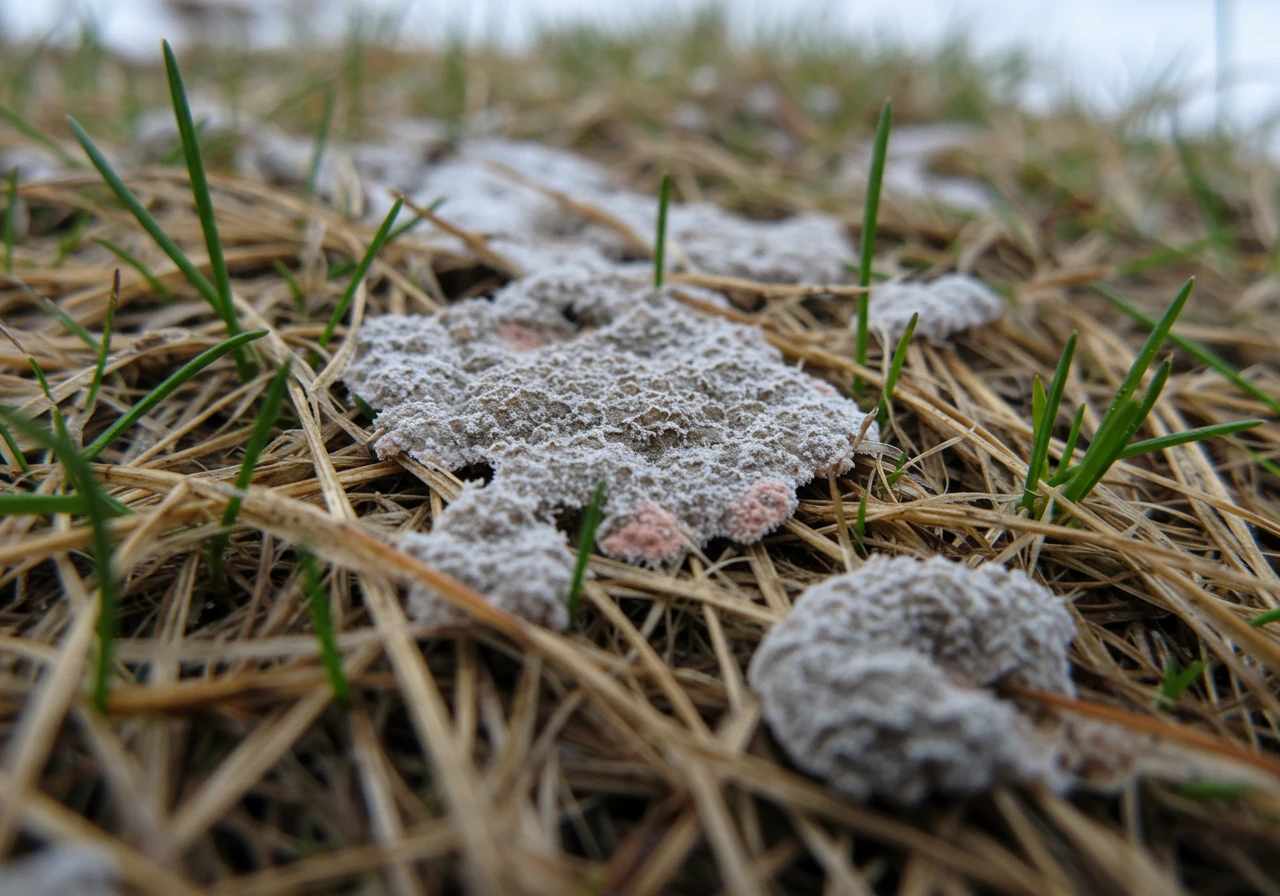
Preventing Winter Woes (Snow, Ice, and Yikes!)
Ottawa winters don’t exactly tiptoe in; they arrive with gusto, bringing heavy snow and potentially damaging ice. That thick, colourful blanket of leaves might look harmless now, but once it gets wet and freezes, it becomes a soggy, impenetrable mat.
- Lawn Suffocation: This mat prevents air, sunlight, and nutrients from reaching your grass. Come spring thaw, instead of green shoots, you might find weak, patchy turf or even dead spots susceptible to snow mold – a nasty fungal disease that thrives under these conditions. Giving your lawn a final cut and thorough leaf removal gives it a fighting chance.
- Branch Breakage: Wet leaves add significant weight to branches, especially on shrubs and smaller trees. Add a load of heavy Ottawa snow or ice on top, and snap! Clearing debris reduces this risk, protecting your landscaping investments.
- Pest Paradise: Piles of leaves and garden debris are basically five-star winter resorts for pests like slugs, voles, and overwintering insects. Clearing them out evicts these critters before they settle in and cause damage.
Boosting Soil Health (Especially Our Clay!)
Many areas around Ottawa, from Nepean to Barrhaven, grapple with heavy clay soil. While challenging, fall offers a great opportunity after you’ve cleared the decks (or, you know, the lawn).
- Stop Compaction: Leaving heavy, wet debris on clay soil all winter can contribute to further compaction, making spring gardening even tougher.
- Amend Away: Once the leaves and dead plant matter are gone, you have clear access to your garden beds. Fall is an ideal time to mix in compost or other organic matter. Need ideas? Check out these suggestions for . This gives the amendments time to integrate and improve soil structure over the winter. Whether you have traditional beds or use raised ones, prepping the soil now is key. Getting the mix right is vital, especially if you’re looking into the best soil for Ottawa raised garden beds.
- Drainage Duty: Clearing leaves and debris from drainage ditches, swales, and around downspouts is critical. Clogged drainage can lead to water pooling, icy hazards in winter, and soggy, unusable areas in spring. Proper flow is essential, and sometimes structure helps, like when .
Setting Up Spring Success
Honestly, the biggest reason might just be kindness to your future self! Every bit of fall cleanup you do now – removing dead annuals, cutting back perennials (the right ones!), clearing leaves – is one less task on your spring to-do list. You’ll be able to jump into the fun parts of gardening much sooner, with healthier soil and happier plants welcoming the warmer weather.
Feeling overwhelmed by the task list? Don’t sweat it! Professional help is available to tackle everything from leaf blowing to final mowing. Homeowners can easily find specific help, like dedicated fall cleanup services to get your Metcalfe yard ready, or explore a full range of landscaping and cleanup services throughout the Ottawa area. Putting in the effort now truly pays off!
Leaf Me Alone? Nah, Let’s Tackle Those Leaves (The Vernon & Nepean Way)
Okay, let’s dive into the glorious, colourful, and sometimes overwhelming reality of fall leaves in Ottawa!
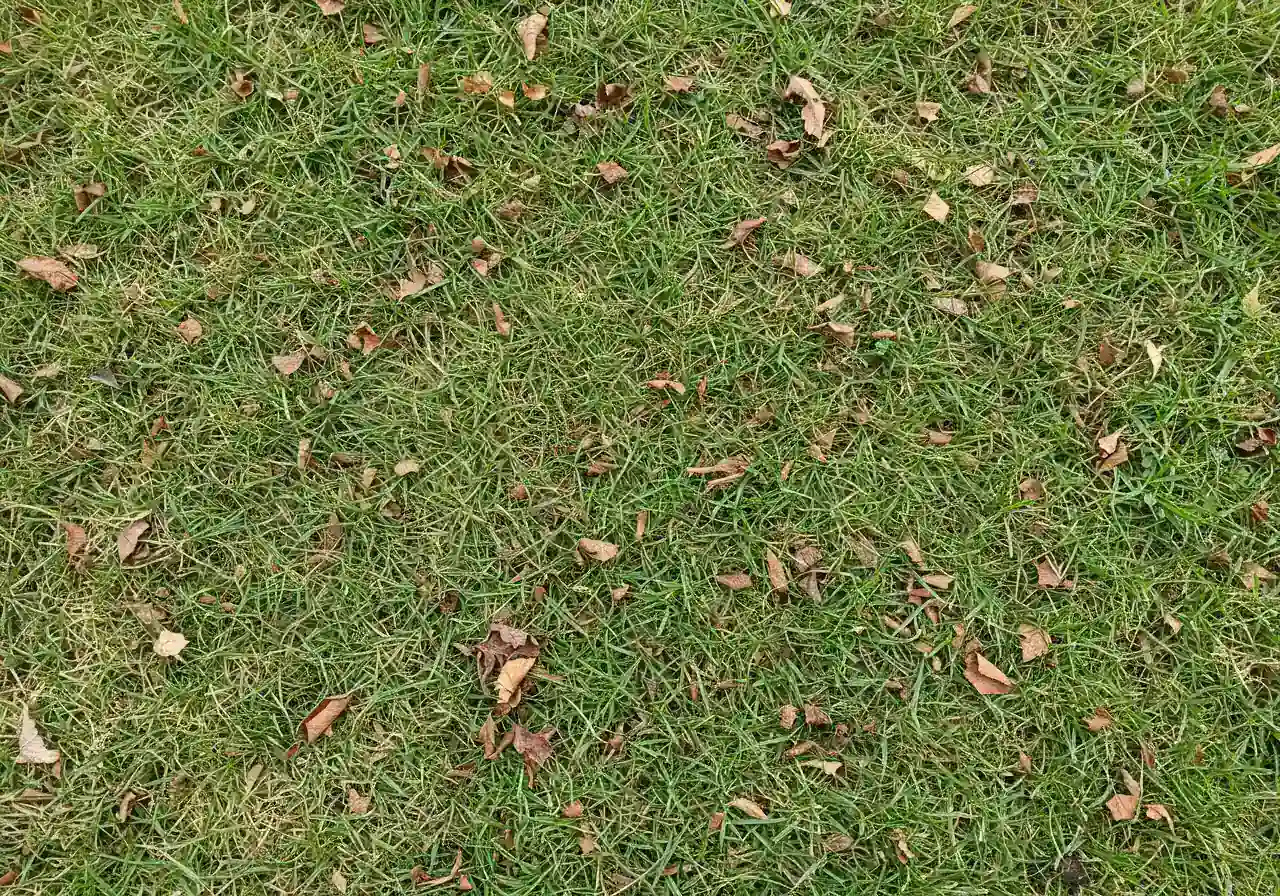
Choosing Your Leaf Battle Strategy
You’ve got a few main weapons in your leaf removal arsenal. Each has its pros and cons:
| Strategy | Effort Level | Noise Level | Lawn Benefit | Disposal | Best For… |
|---|---|---|---|---|---|
| Raking | High | Low | Low | Bag/Compost | Smaller yards, getting kids involved |
| Mulching Mowing | Medium | Medium | High | None (mostly) | Healthy lawns, returning nutrients |
| Leaf Blowing | Medium | High | Low | Pile/Bag/Tarp | Large areas, moving leaves quickly |
Eco-Friendly Options: Be Kind to Your Yard (and the City!)
Leaving a super thick layer of leaves on your lawn is a no-go (remember snow mold? Yuck!). But those leaves are packed with nutrients. Here’s how to make the most of them:
- Mulching Mowing: This is often the best choice for your lawn. Instead of bagging, you finely chop the leaves with your mower, letting the small pieces fall back onto the grass. These bits decompose over winter, feeding your lawn valuable organic matter. Think of it as free fertilizer!
- Composting: Got a compost bin? Leaves are fantastic “brown” material. Mix them with “green” stuff like kitchen scraps for gardening gold next spring. Just avoid diseased leaves or those from Black Walnut trees.
- Ottawa’s Green Bin Program: For leaves you can’t mulch or compost (maybe the volume is just too much!), the City of Ottawa’s Green Bin program is your friend. Check their collection schedule and guidelines for paper yard waste bags or reusable containers.
Ready to turn those leaves into lawn food? Here’s a simple guide:
- Check Your Mower: Ensure you have a mulching mower or a mulching blade attachment. Keep the blade sharp!
- Set the Height: Cut your grass at a normal height (around 3 inches is good for fall).
- Don’t Wait Too Long: Mow when the leaves are dry if possible, and don’t let them get thicker than a few inches. You might need to mow more frequently during peak leaf fall.
- Go Slow: Allow the mower time to chop the leaves finely. You might need to make a second pass in areas with heavy leaf cover.
- Admire Your Work: You shouldn’t see large leaf pieces, just finely shredded bits settling into the grass.
Feeling Buried? We Can Help!
Look, sometimes the leafpocalypse is just too much, especially on larger properties or if you’re short on time. If raking feels like trying to empty the Rideau Canal with a teaspoon, professional help is a smart move. Whether you need a complete fall yard cleanup or just help tackling the mountains of leaves, there are options available. Explore the various landscaping and cleanup services offered throughout the region. Folks in Vernon can find specific help with the dedicated Vernon garden clean up service. And don’t worry if you’re a bit further out; support extends to areas like the Metcalf property cleanup service and even the Marionville yard cleanup service. Not sure what you need? It’s easy to book an estimate and get a clear plan to conquer those leaves before winter truly sets in.
Tucking In Your Garden Beds for a Long Winter’s Nap (Osgoode & Metcalfe Edition)
Okay, your lawn might be getting its final haircut (more on that crucial final lawn care soon!), but what about your garden beds? Especially out here in Osgoode and Metcalfe, giving your flower and veggie patches some attention now makes a huge difference come spring. Think of it as tucking them in properly for their long winter’s nap!
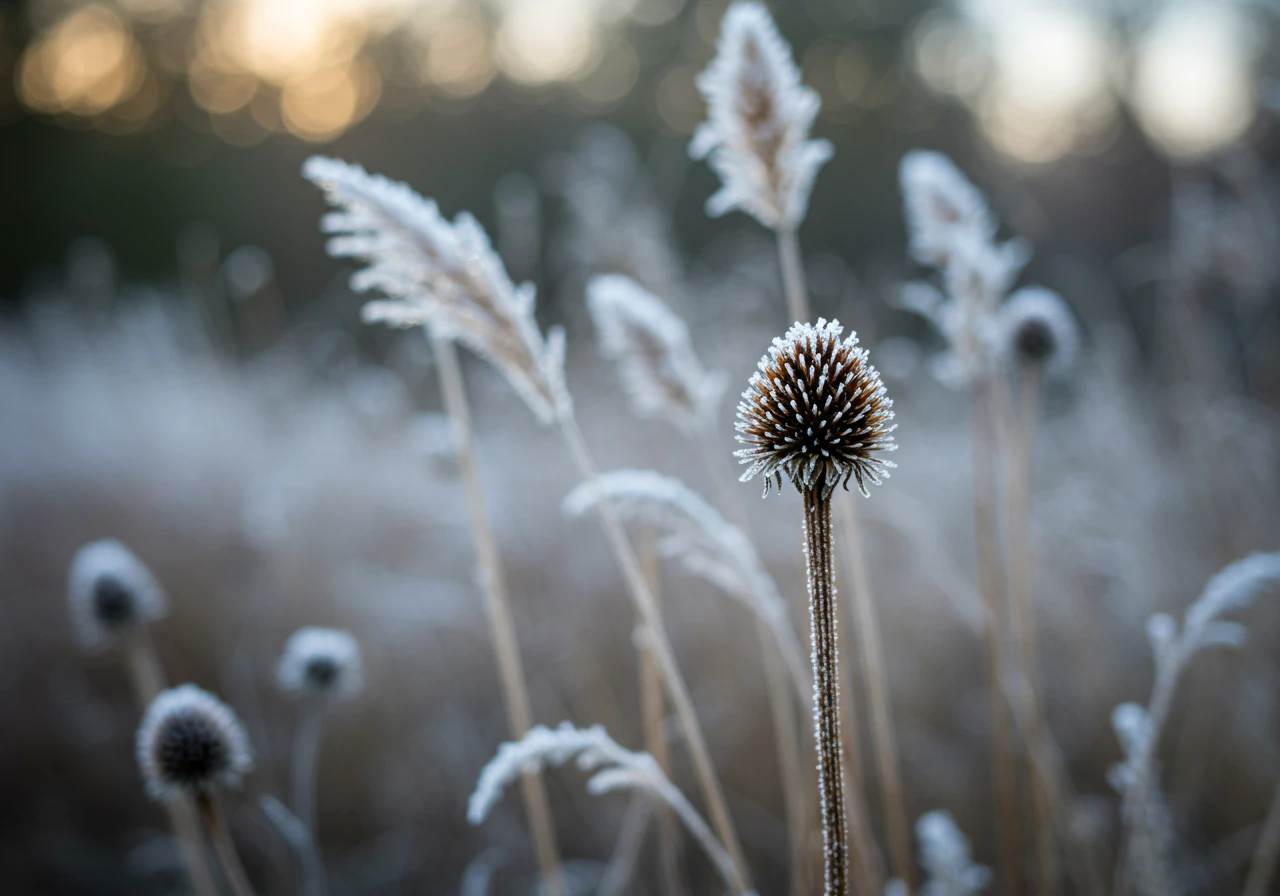
Perennial Prep: To Chop or Not to Chop?
This is always the big question! Here’s the lowdown for our Ottawa Zone 5a climate:
- Cut Back: Plants prone to disease (like peonies or hostas with slug damage) or those that turn into a mushy mess (daylilies) are best cut back to about 4-6 inches above the ground after a few hard frosts. This tidies things up and removes potential hiding spots for pests and diseases.
- Leave Standing: Many perennials offer winter interest and food/shelter for birds. Think sturdy seed heads like Coneflowers (Echinacea), Black-Eyed Susans (Rudbeckia), and Sedum ‘Autumn Joy’. Ornamental grasses also look fantastic dusted with snow. Leave these until early spring for cleanup.
Simple Perennial Cutback Steps:
- Wait for a few hard frosts – let the plants start dying back naturally.
- Use clean, sharp pruners or shears.
- Cut back the “messy” or disease-prone plants to 4-6 inches.
- Leave the sturdy, interesting ones standing for winter beauty and wildlife.
- Compost healthy cuttings; discard diseased material.
Planting Spring Surprises: Bulb Magic!
Want a burst of colour first thing next spring? Now’s the time to plant spring-flowering bulbs like tulips, daffodils, hyacinths, and crocuses. Aim to get them in the ground after the first light frosts but before the ground freezes solid – usually October here in Ottawa is prime time. Plant them pointy-side up, typically 2-3 times deeper than the bulb is tall. It’s like burying little treasures that will bring huge smiles later!
Veggie Garden Farewell
Don’t leave old tomato vines or zucchini skeletons haunting your veggie patch! Pull out all the dead annual vegetable plants. This is crucial for preventing pests and diseases from overwintering in the soil or plant debris. Healthy material can go in the compost bin; toss anything diseased in the garbage.
Feed the Soil (Especially Osgoode & Metcalfe Clay!)
Many of us around Osgoode and Metcalfe know the joys (and sorrows!) of working with clay-heavy soil. Fall is the perfect time to improve it. After clearing out the old plants and weeds, spread a generous layer (a few inches) of compost or well-rotted manure over the beds. You can gently incorporate it into the top few inches or just let winter’s freeze-thaw cycles help work it in. This adds vital organic matter, improves drainage, and feeds the soil microorganisms all winter long, making spring gardening so much easier. Understanding local conditions is key – something we pride ourselves on; you can learn more about our local focus on the About Us page.
Feeling like your beds need more than just a tuck-in? If you’re facing a major overhaul or just need a hand with the heavy lifting, you can always book an estimate for fall cleanup services. We value hearing how things went, too – feedback helps us ensure we’re meeting the specific needs of communities like Metcalfe and Osgoode, which is why we always appreciate when clients take a moment to share their thoughts via our estimate feedback form. A little prep now means a happier, healthier garden next year!
Lawn Care Last Call: Prepping Your Turf Before the Freeze Hits Richmond & Kars
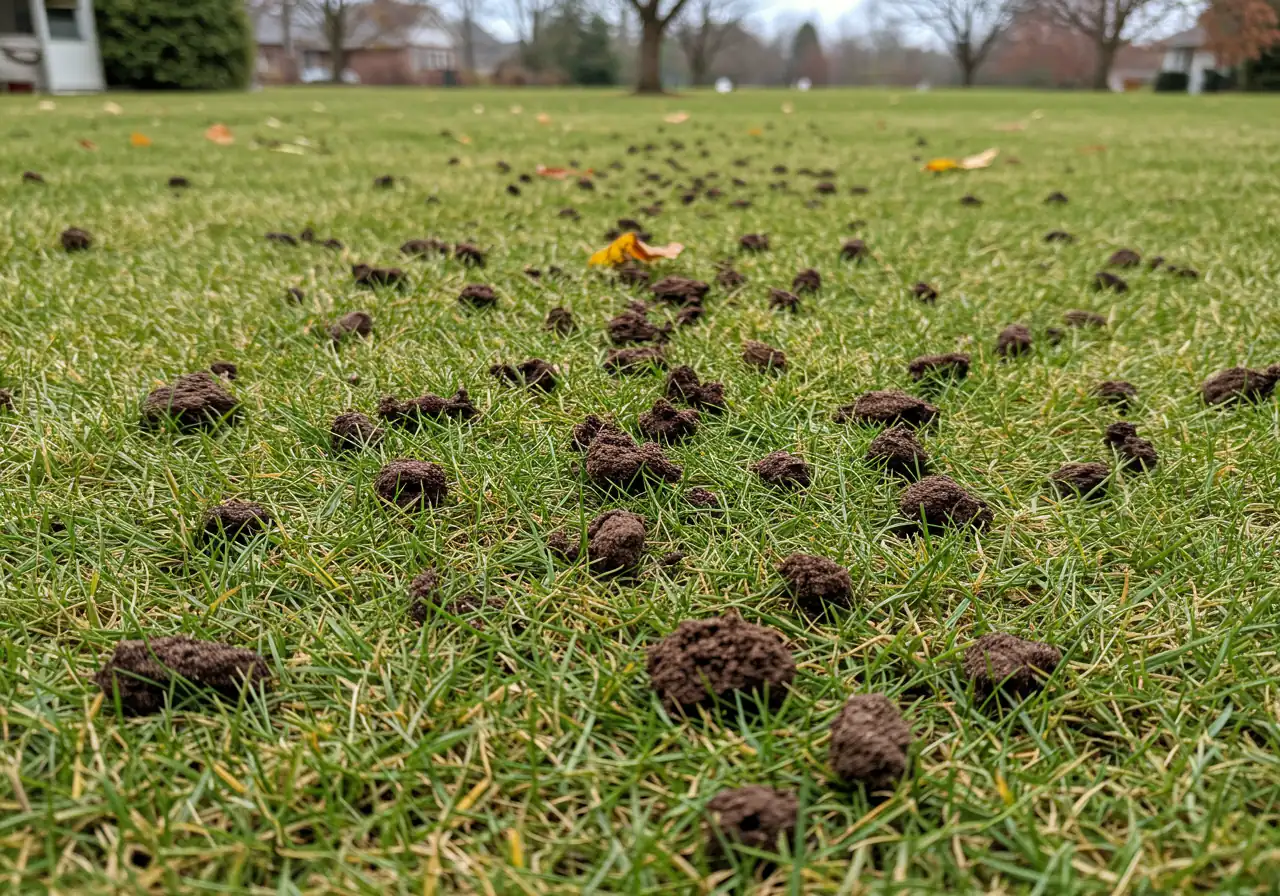
Alright folks in Richmond, Kars, and across Ottawa, listen up! The gardening season might be winding down, but your lawn needs a few final tasks before Old Man Winter crashes the party. Consider this your lawn’s “last call” for crucial prep work. Skipping these steps now can mean dealing with a sad, patchy turf come springtime. Let’s get your grass ready for its winter hibernation!
The Final Mow: Not Too Short, Not Too Tall
Before your lawn goes dormant (usually after the first few light frosts but before a hard freeze), give it one last cut. But don’t scalp it! Aim for a height of about 2 to 2.5 inches. Cutting it shorter helps prevent snow mold, a nasty fungal disease that loves long, wet grass under snow cover. However, cutting it too short exposes the crown of the grass plant to winter damage. This final trim tidies things up and ensures good air circulation.
Let it Breathe: The Magic of Aeration
Ottawa’s soil, especially in areas like Richmond, can get pretty compacted. Aeration – pulling small plugs of soil out of the lawn – is like giving your lawn’s roots a breath of fresh air. It breaks up compaction, allowing water, oxygen, and nutrients to reach the root zone more easily. Fall is a great time to aerate because the soil is still workable, and your lawn will have time to recover before winter. Better soil structure helps with everything, complementing the work needed for good soil preparation for garden beds too.
Thicken Up: Why Overseeding Works
Got thin spots? Fall is the ideal time to overseed. Spreading grass seed over your existing lawn helps fill in bare patches and thickens the turf overall. This creates a denser lawn that’s better at crowding out weeds next spring. Aerating before overseeding is a pro tip – it creates perfect little pockets for the seeds to settle into, improving seed-to-soil contact and germination rates. While overseeding boosts your lawn, if you’re dreaming bigger for next year, perhaps it’s time to think about a professionally done new garden bed installation.
The Winter Feast: Fall Fertilizer
Think of fall fertilizer as your lawn’s final meal before its winter sleep. Applying a slow-release fertilizer high in potassium (often called a “winterizer”) in late fall – after top growth has slowed but before the ground freezes solid – helps promote strong root development over the winter. This stored energy leads to a quicker green-up and a healthier lawn next spring.
Water Wisely
Your lawn generally needs less water in the cool fall months. However, make sure to water adequately after aerating, overseeding, or applying fertilizer to help activate the product and keep new seeds moist. Taper off watering as consistent freezing temperatures approach – you don’t want soggy ground heading into winter.
Feeling a bit overwhelmed by the last-minute landscaping rush? These tasks can take time and effort. If you’d rather spend your fall weekends enjoying the last nice days, consider professional help. Many comprehensive Ottawa yard cleanup services include these crucial lawn care steps. If you have questions about the best timing for your specific lawn in Richmond or Kars, don’t hesitate to contact us for expert advice. A little effort now pays off big time for a lush lawn next year!
Protecting the Perimeter: Trees, Shrubs, Gutters & Gear in Greely & Winchester
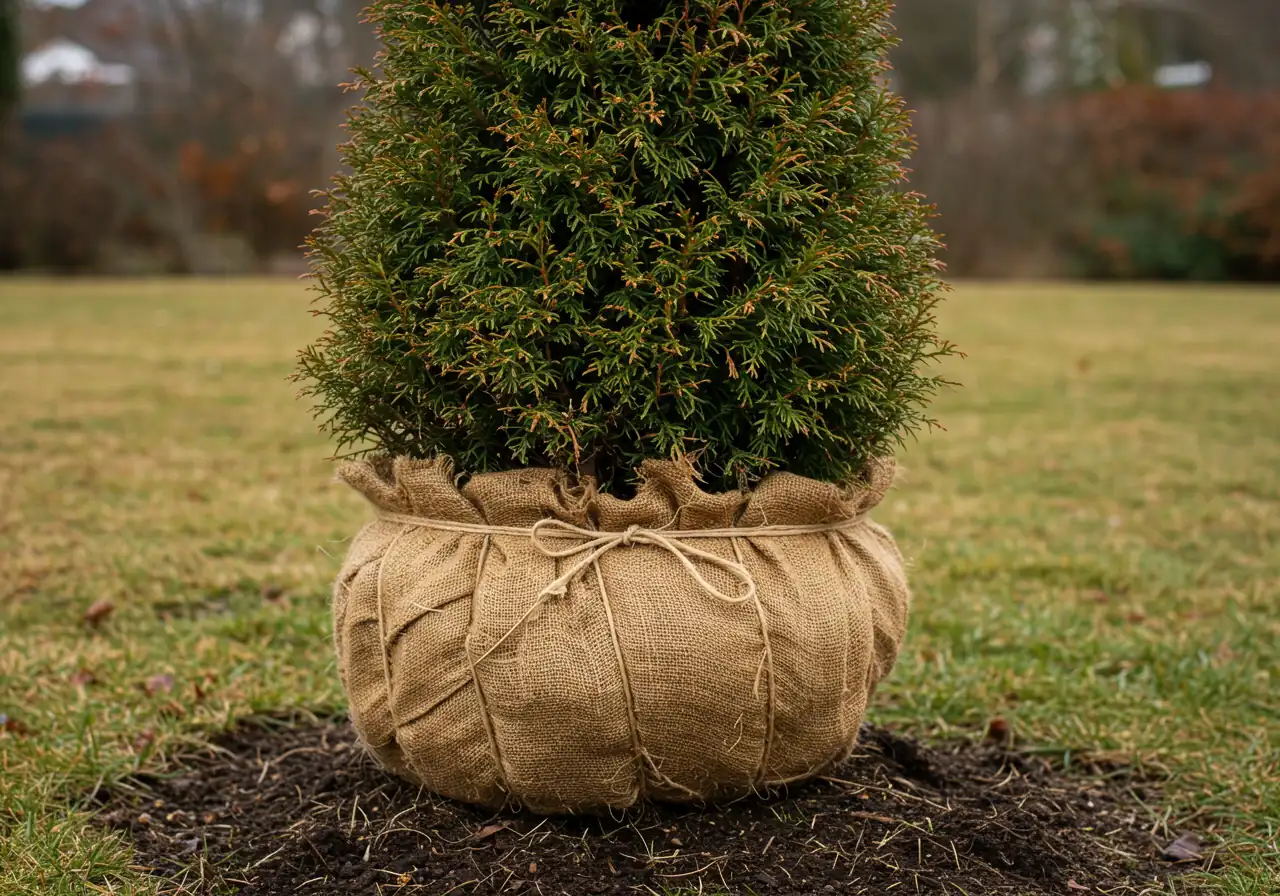
Alright team, let’s talk about battening down the hatches around your yard’s perimeter! Proper winter protection for your trees, shrubs, structures, and equipment is key, especially in areas like Greely and Winchester where open spaces can mean more exposure to harsh winds and winter sun. Think of this as putting a cozy winter coat on your landscape.
Give Your Shrubs a Hug (With Burlap!)
Some shrubs are tougher than others, but many evergreens like cedars, boxwoods, and certain hollies can suffer from winter burn (drying winds, intense winter sun) or damage from heavy snow and ice. This is particularly true on exposed sites common around Greely and Winchester. Wrapping vulnerable shrubs, especially younger ones, is a smart move.
- Gather Supplies: You’ll need burlap, twine or zip ties, and wooden stakes (optional, but helpful for creating a frame around delicate plants).
- Stake (Optional): Place 3-4 stakes around the shrub, slightly angled outwards, creating a buffer zone.
- Wrap it Up: Starting at the base, loosely wrap the burlap around the stakes or directly around the shrub. Overlap the edges slightly. You want to block wind and sun, not suffocate the plant, so don’t wrap too tightly!
- Secure: Use twine or zip ties to hold the burlap in place. Wrap spirally or tie it off in a few places. Remove the wrap in early spring after the risk of hard frost is over.
Tree Check-Up Time
Your larger trees usually don’t need wrapping, but a quick inspection is wise. Look for any dead, damaged, or dangling branches. Heavy snow and ice can bring these down, potentially causing damage below. Pruning minor issues now is easier and safer than dealing with storm damage later. For large branches or anything near power lines, always call a professional arborist – safety first! Completing these tasks is part of a thorough Ottawa garden clean up service that ensures your entire property is ready.
Gutter Duty: Don’t Let It Overflow!
Ah, gutters. Out of sight, often out of mind… until they cause problems! Clogged gutters are bad news. When fall leaves and debris block them, melting snow and ice have nowhere to go but over the edge, potentially causing foundation issues, siding damage, or dangerous icy patches below. Grab a ladder (safely!), gloves, and a scoop, and clear them out after most leaves have fallen. It’s not glamorous, but it’s crucial. You can see examples of well-maintained properties, including tidy rooflines, in our Gallery.
Stow Your Stuff!
Don’t let Jack Frost wreak havoc on your outdoor gear.
- Furniture: Clean and store patio furniture in a shed, garage, or basement. If covering it outdoors, ensure the cover is secure.
- Pots & Planters: Empty soil from terracotta and ceramic pots (they can crack if frozen with moist soil). Clean and store them upside down or indoors.
- Hoses & Sprinklers: Drain hoses completely, coil them up, and store them indoors to prevent cracking. Shut off outdoor water taps!
- Decorations: Bring in gazing balls, delicate statues, or anything that could be damaged by freezing temperatures or high winds.
Tool Time TLC
Give your gardening tools some love before storing them.
- Clean off dirt and debris from shovels, rakes, pruners, and mowers.
- Sharpen blades on pruners and mower blades (or get them professionally sharpened).
- Apply a light coat of oil (like WD-40 or mineral oil) to metal parts to prevent rust.
- Store tools in a dry place.
Taking these steps protects your landscaping investments and makes spring startup much smoother. If the list feels long, remember that help is available. Services like the Marionville garden clean up service cover many of these perimeter protection tasks for communities neighbouring Winchester. When contacting any service, rest assured your personal information is handled responsibly; you can review our commitment to data security in our Privacy Policy. A little prep now saves big headaches later!
Ottawa Fall Cleanup Cheat Sheet: Key Tasks & Timing
Feeling the autumn crunch in Barrhaven or elsewhere in Ottawa? Here’s a quick rundown of essential fall cleanup tasks to hit before the snow flies. Think of it as your get-it-done guide!
- Leaf Management Begins: Start mulching mowing or raking leaves as they fall, before they mat down. Don’t let them suffocate your lawn!
- Perennial Assessment: Decide which perennials need cutting back later and which to leave for winter interest. This is part of basic garden maintenance.
- Plant Bulbs: Get those spring-flowering bulbs (tulips, daffodils) in the ground after the first light frost.
- Continue Leaf Removal: Keep up with the leaves! This is often the peak period.
- Clean Veggie Garden: Pull out spent annual vegetable plants to prevent pests and diseases.
- Aerate Lawn (Optional but Recommended): Especially helpful for compacted clay soil.
- Final Mow: Cut the lawn to 2-2.5 inches.
- Gutter Cleaning: Clear out leaves and debris after most leaves have fallen.
- Protect Shrubs: Wrap sensitive evergreens (like cedars) with burlap.
- Fertilize Lawn: Apply a winterizer fertilizer to boost root growth.
- Store Gear: Drain hoses, clean and store tools, furniture, and empty pots.
Overwhelmed? A comprehensive Ottawa property cleanup service can handle this checklist for you. If poor lawn health has you thinking about next spring already, maybe it’s time to consider professional sod installation. Getting it done now means you can relax later – check out our Thank You page once you’ve booked your service and breathed a sigh of relief!
FAQs: Your Vernon & Ottawa Fall Cleanup Questions Answered
Most Popular Fall Cleanup Tasks in Ottawa
Ah, the million-dollar question! Ideally, you want most fall cleanup tasks done before the ground freezes solid, usually around mid-to-late November in the Ottawa region. Definitely try to get leaves cleared and gutters cleaned before the first significant snowfall – wet, frozen leaves are no fun! Tasks like wrapping shrubs or the final lawn care mow should happen after a few frosts but before that deep freeze. Don’t wait too long, or you might be doing landscaping in your snow boots!
We get it, raking isn’t everyone’s favourite workout! While leaving a few stray leaves isn’t a disaster, a thick layer is bad news for your turf. It mats down, blocks sunlight and air, and invites diseases like snow mold over winter. A great alternative is mulching mowing – chopping them finely returns nutrients to the soil. If the leaf volume is just too much, consider a thorough property clean up to ensure your lawn breathes easy through the winter months.
Good question! It’s a bit of a balancing act in the gardening world. You should definitely cut back perennials prone to disease (like hostas or peonies if they had issues) or ones that turn to complete mush (like daylilies) after a few hard frosts. However, leave sturdy plants with interesting seed heads (like coneflowers, rudbeckia, sedum) and ornamental grasses standing. They provide winter visual interest and food or shelter for birds. Clean those up in early spring instead!
Yes, absolutely! Think of it as packing a lunch box for your lawn’s winter nap. Applying a “winterizer” fertilizer, which is typically higher in potassium, in late fall (after top growth slows but before the ground freezes) helps strengthen the roots. This stored energy helps your turf survive winter stresses and leads to a quicker, healthier green-up next spring. It’s a key part of late-season lawn care. Existing clients can often check their service schedules, including fertilization timing, via the handy customer portal.
Generally, it’s best to start with an estimate, especially for fall cleanup, as the scope of work can vary widely depending on your property size and specific needs (heavy leaf removal, gardening bed prep, etc.). Most professional services will want to assess the situation to give you an accurate price. You can usually request an estimate online easily. Check out specific service pages, like the Metcalf garden clean up service, to see the types of tasks typically included before requesting your quote.
Great thinking! After clearing out weeds and dead annuals, give your soil some love. Spreading a few inches of compost or well-rotted manure over the beds is fantastic. It adds nutrients and improves soil structure over winter – especially helpful for clay soils common around Ottawa. Another finishing touch is defining the borders. Considering professional mulching and edging now can give beds a crisp look and make spring maintenance easier by helping keep turf from creeping in.
Conclusion: Relax This Winter, Knowing Your Vernon Yard is Ready
Whew! We’ve covered the essential fall cleanup checklist for your Ottawa home, from leaf management to final lawn care. Getting your Vernon yard ready for winter might feel like one last gardening hurdle, but think of the payoff: a healthier lawn come spring, protected shrubs, and way less work when the snow finally melts. Plus, you get that satisfying feeling knowing your landscaping investment is tucked in safe and sound before the big freeze truly hits! A little effort now really does let you kick back and relax later.
So, feeling ready and empowered to tackle that list yourself? Awesome! Use these tips, channel your inner landscape guru, and enjoy the crisp fall air while you work. Or, maybe your weekends are already jam-packed, or you’d simply rather sip a hot beverage than wrestle with burlap and leaf bags? No judgment here! If you’d prefer to leave the raking, wrapping, and prepping to the pros, we’ve got your back. Our teams offer expert fall cleanup services throughout the Ottawa area, including Vernon, Manotick, Greely, Osgoode, Metcalfe, Nepean, and Barrhaven.
Check out our Google reviews to see what your neighbors think about our services. Either way, here’s to a cozy winter, knowing your yard is ready and waiting for spring!
Additional Ottawa Resources:
Looking for other landscaping services? We offer a range of professional services including material selection consulting, garden installation, and garden maintenance. Before working with any service provider, be sure to review their terms and conditions for peace of mind.


